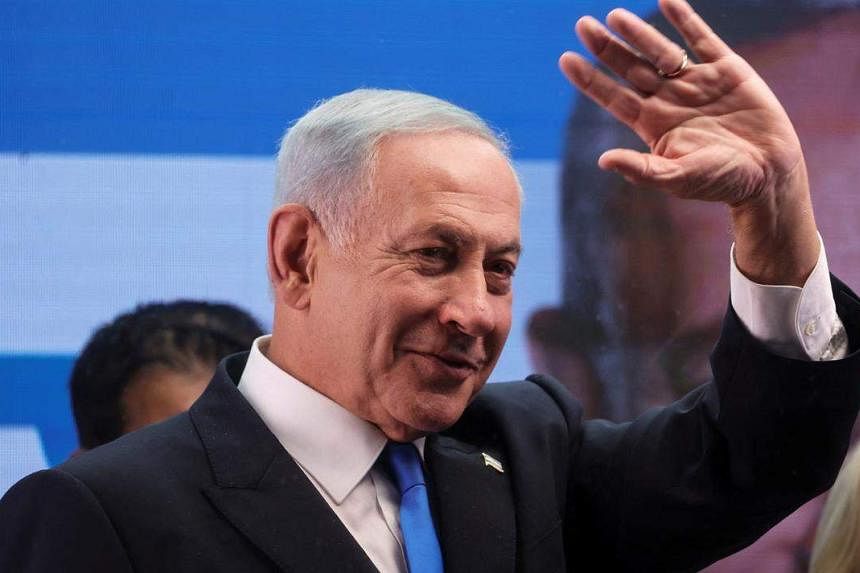RIO DE JANEIRO - Luiz Inacio Lula da Silva won an election as Brazil’s president on Sunday in a dramatic comeback for the left-wing politician who was languishing in a jail cell just three years ago on corruption charges.
He defeated the incumbent Jair Bolsonaro with 50.9 per cent to 49.1 per cent of the votes in Sunday’s runoff vote, according to the official tally.
As Lula celebrates his spectacular comeback from jail to a third term as president, we look at other leaders who returned from the political wilderness – and those hoping to emulate them.
Winston Churchill

The politician who set the gold standard for wartime leadership stumbled badly in World War I, when he sent tens of thousands of Allied troops to their death in the disastrous Gallipoli campaign.
Churchill resigned as minister of the navy in disgrace, but returned to lead Britain to victory over Nazi Germany in World War II, galvanising the nation with dozens of epic speeches.
In July 1945, the Conservatives were voted out but Churchill led them back to power in 1951 at the age of 76.
Charles de Gaulle

France’s World War II Resistance leader was acclaimed as a hero at the Liberation of Paris in August 1944.
But just two years later he resigned as head of France’s provisional government after failing to win backing for his vision of a strong US-style presidency.
He was called back in 1958 to lead the country through Algeria’s war for independence from France and used the opportunity to push through a new constitution that gave much more power to the head of state.
Juan Peron

Argentina’s president from 1946 to 1955 and his wife Eva founded a social justice movement dubbed “Peronism” that still inspires adulation on Argentina’s left and abhorrence on the right.
But he was ousted in a coup and went into exile in Paraguay, then Madrid, before returning to Argentina to scenes of wild rejoicing in 1973.
He served a further nine months as president before his death.
Deng Xiaoping

Deng Xiaoping, China’s most powerful figure from the late 1970s until his death in 1997, was purged twice during the Cultural Revolution.
Banished by revolutionary leader Mao Zedong in 1966 as a “capitalist roader”, he worked in a tractor factory.
He was rehabilitated in 1973, purged again in 1976 by the pro-Mao “Gang of Four” radicals, but returned as de-facto leader after Mao’s death later that year to oversee China’s transformation into an economic superpower.
Aung San Suu Kyi

Myanmar’s pro-democracy leader won elections in 1990 but the military government of the day refused to hand over control.
She spent most of the next two decades under house arrest before becoming prime minister in 2016 after her party’s victory in the first openly contested election in a quarter of a century.
But the freedom was short-lived.
The military ousted her government again in February 2021 and has since sentenced her to a total of 26 years in prison.
Silvio Berlusconi

Italy’s three-time former prime minister Silvio Berlusconi has made so many comebacks he’s nicknamed “the immortal”.
The 86-year-old billionaire did it again in the country’s Sept 25 elections, when he returned to the Senate, nine years after being kicked out for tax fraud.
Berlusconi, who campaigned as a benevolent granddad, also survived an earlier scandal involving sex parties that he hosted as premier.
His party is in coalition with far-right Prime Minister Giorgia Meloni.
Eyeing a comeback
Donald Trump

One of the most divisive presidents in US history has dropped strong hints he may run again in 2024 while continuing to falsely claim he was the rightful winner of the last vote.
Benjamin Netanyahu

Israel’s longest-serving prime minister, who was ousted in June 2021, is hoping to reclaim the top job in Nov 1 elections, despite being charged with corruption.
Jacob Zuma

South Africa’s 80-year-old ex-president, who was forced to step down in 2018 over corruption allegations, is eyeing a comeback in December, when the ruling African National Congress holds leadership elections. AFP, BLOOMBERG

